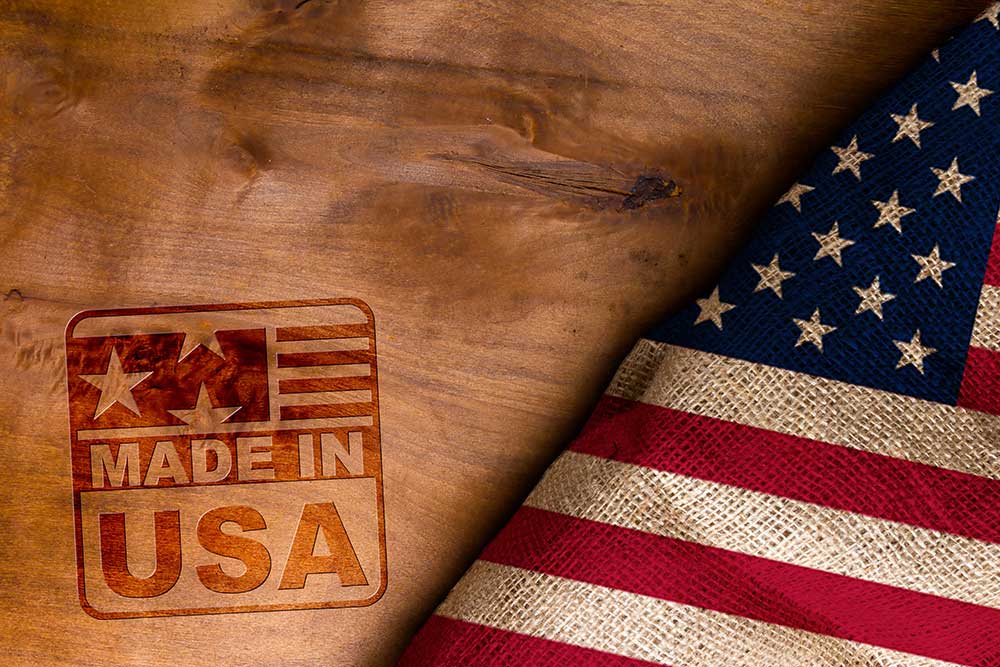- Navigator
- Business Retention and Expansion (BRE)
- National
- Manufacturing
 My colleagues and I at Camoin Associates talk with CEOs and C-suite executives about their business expansion and site selection plans every day as part of the lead generation work we do for our clients. These discussions, along with some additional research, reveal a distinct trend: manufacturing is gradually returning to the United States through reshoring.
My colleagues and I at Camoin Associates talk with CEOs and C-suite executives about their business expansion and site selection plans every day as part of the lead generation work we do for our clients. These discussions, along with some additional research, reveal a distinct trend: manufacturing is gradually returning to the United States through reshoring.
This marks a significant reversal from the decades-long practice of offshoring production to other countries to cut costs and increase profits.
One of the first examples of the offshoring trend in the 1980s was General Motors’ decision to close its plant in Flint, MI, and move production to Mexico, which resulted in the loss of 50,000 US jobs and had a significant negative impact on the economy and quality of life in Flint. Fast forward 40 years to General Motors’ recent announcement that it will spend $7 billion on four new plants in Michigan. The company has also started buying parts from over 5,000 US-based suppliers instead of overseas companies.
Additional recent reshoring activities include:
- Intel is investing $12 billion in two chip factories in Phoenix, AZ, that are due to be operational in 2024.
- One of the oldest companies in the US, General Electric (GE), is investing $2 billion in new US plants producing various household appliances, including a water heater plant in Camden, SC.
- Lockheed Martin invested $16.5 million into a new missile defense integration lab in Huntsville, AL.
The following are six reasons behind business interest in reshoring in the US:
1. Shorter Supply Network Lead Times
Customers expect to receive the products they order promptly. Long delays often result in damage to a company’s reputation and loss of repeat business. C-level executives of large companies have told us that one of the benefits of reshoring manufacturing to the US is the shorter supply network lead time. It is a given that moving production overseas or ordering parts from overseas companies increases the amount of time it takes to get a finished product to market. It is a trade-off that many companies are willing to make in return for higher profits. However, that trend is changing after the crippling supply chain problems experienced during the COVID-19 pandemic.
Many US-based companies are finding that having every component of high-demand items like automobiles, aircraft, construction equipment, and computers produced here in the USA shortens the amount of time it takes to get a finished product to market, reduces costs and timelines for shipping, and increases flexibility and responsiveness to customer needs.
2. Offshoring Costs are Increasing
Over the past 10 years, some costs associated with manufacturing goods overseas have started increasing, reducing the profits once gained by offshoring. An example of this is labor costs in China, where wages have increased nearly 400% in the last decade. Even though this is still lower than US wages for the same jobs, when you add in the additional cost of tariffs, inventory holding, freight and currency fluctuations, and the dramatic impact the COVID-19 pandemic had on the supply chain, businesses are discovering that the overall financial benefits of offshoring are being eroded.
3. Cutting Out the Middleman
For years, many manufacturing companies have sold their products to customers through third-party retailers, group buying organizations, and other types of middlemen. Today, some of these companies have begun selling directly to consumers, cutting out the middleman and the costs and increased lead time associated with them. Additional benefits of doing direct sales include improved customer service and marketing opportunities.
4. Skilled Workforce
The United States has one of the highest-skilled workforces in the world, ranking sixth out of 87 countries in a US News & World Report survey. However, we are also experiencing a labor shortage, and a recent study by the Manufacturing Institute and Deloitte projects there will be 2.1 million unfilled jobs in the manufacturing industry by 2030 due to the lack of skilled labor. Investments in workforce development and training from employers combined with federally funded programs, like Investing in America, will hopefully help close that gap.
5. Reducing the Risk of Patent Infringement
The US has laws that aggressively protect intellectual property ownership and patents. This is not the case in many other countries, and some companies are finding the risk of patent infringement, counterfeiting, and cyber theft is greater than the rewards of doing business overseas.
6. Technology Advancements
In the past few years, companies have started to shift manufacturing and production from overseas to domestic factories thanks in part to advancements in technology on the factory floor that are helping lower overhead costs, increase efficiency, and automate tasks. From robotics and 3D printing to logistics and package management, technology advancements are helping companies improve and better control their supply chains, work around labor shortages, enhance data security, and predict maintenance needs before problems arise.
Throughout my education and career, I have seen the challenges that result from offshoring manufacturing. The growing popularity of reshoring not only signals the return of jobs to the US but also promises to revitalize local and national economies.





